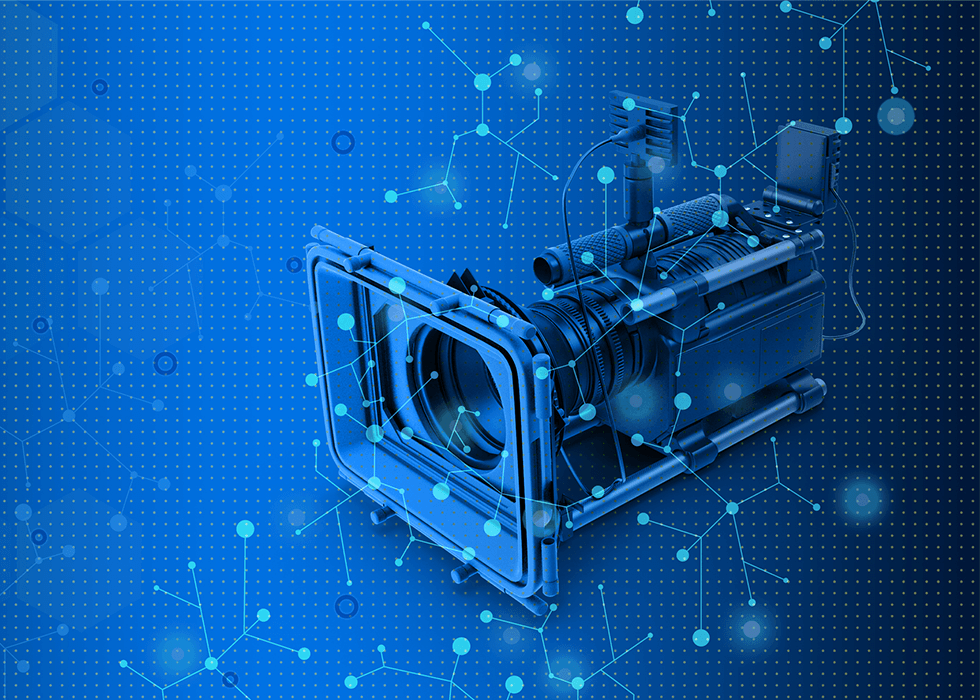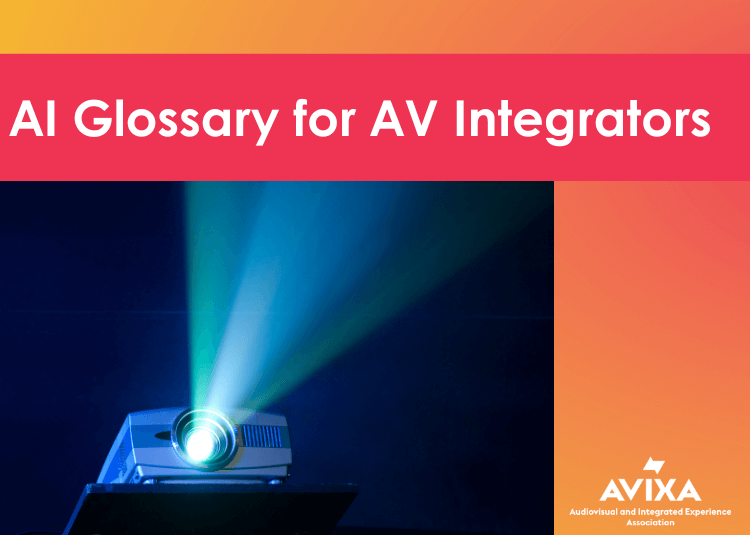News & Trends
AI Reality Check
Let it be said at the outset that I am both amazed by, and a fan of, artificial intelligence. So much so that I recently wrote a trilogy on the topic. I explored the early developers with their thinking of what AI was (at the time) and what it would become, along with chronological development to show the evolution. I then wrote about the fundamentals of AI and how it works and finished up what the future holds (upsides and caveats) relative to the technology. There is not a publication in or out of our industry that does not include AI in one form or another at the top of the list of major trends.
AI is a game changer, and it is fair to claim it is on the level with the industrial revolution, the invention of the PC, and the internet. It has permeated every aspect of our personal and professional lives. To quantify this understanding, PwC's Global Artificial Intelligence Study has highlighted the immense potential of AI, with “a projected $15.7 trillion contribution to the global economy by 2030. This impact will also be translated into a 26% boost in GDP for local economies. Improvement in labor productivity and product enhancements are set to drive economic gains and stimulate consumer demand with increased personalization. China and North America are expected to lead with a contribution of $10.7 trillion, nearly 70% of the global impact. With this overwhelming potential, it was inevitable for artificial intelligence to have a role in the disruption of employment and jobs around the globe.” Growth is good but it is the “disruption” factor that concerns so many. Let’s explore the reality of what the report calls disruption (aka. change) and some things AI simply can’t do… that humans can.
At one level, it appears that AI is rapidly becoming the “be all and end all” technologically speaking. The key word here is “appears” … and to some degree (still to be determined) appearances can be misleading. There are certainly positive implications surrounding productivity and the ability to rapidly do calculations and facilitate (with speed and accuracy) processes that previously took a lot of time, but there are also existential implications for jobs, workers, and to the “sky is falling” crowd even humanity writ large.
At one level artificial intelligence is not artificial at all. It relies on data as the fuel of intelligence and then huge amounts of data is sorted by topic, type, and application and put into “algorithmic engines” to kick out whatever the desired result is. The obvious weakness falls under three areas. One is the “garbage in and garbage out” scenario, the second is the variable quality of an algorithm, and the third is high cost.
The fact is that we are in the early stages of AI. It is interesting to note that the early developers set forth forecasts of developmental time frames and they have basically been proven wrong (by a significant amount) in their estimates of the length of time certain things would take. One example is large language models like ChatGPT, and another is generative AI. Both are much further along than pundits opined just a few short years ago. Perhaps stating the obvious, AI is on a rapid path of development and continuous improvement and is evolving in front of our very eyes.
Does this mean that AI will become the “be all and end all”? Well, the correct answer (at least to this writer) is yes and no. AI can increase productivity. AI can perform repetitive tasks much quicker and more accurately. Some research suggests AI will impact 80% of all roles. Will AI replace some current jobs? Yes, it will… but will AI replace most jobs and even human beings? The answer is a resounding no! Of course, I will explain with research and data to back up the claim.
AI research tells us that AI will “never replace the art of communication” and what some call the “soft skills” inherent in the DNA of a human being. In one report, 80% of survey respondents shared that soft skills are more important than ever with the evolution of AI. While AI is seen as helpful in some areas, those surveyed sent a message that it cannot replace the “intuitive nature of human connection”.
Psychologists specializing in human resources tell us that “taking time to get to know and truly understand the people you work with goes a long way in creating meaningful connections and productive workplaces. The individuality that we all bring to our jobs is what makes strong teams and good cultures. Clarity of vision, problem solving, helping your teams navigate conflict, adaptability, and creating positive cultures are all skills that need a human element to truly be successful.”
Respondents to a recent survey say the top 3 most important skills are communication, followed by leadership, and then adaptability. Complexity and nuance of conversations, and especially conflict management are tricky elements to navigate and best-done face to face. Humans and their interactions are complex and reactions to difficult situations require time to connect, communicate, and work through conflict at a personal level and in the end, this can make all the difference.
The 800-pound gorilla in the room is fear of the unknown and specifically how things will affect each of us from a job perspective. Consider this from a Goldman Sachs report: “The good news is that worker displacement from automation has historically been offset by creation of new jobs, and the emergence of new occupations following technological innovations accounts for the vast majority of long-run employment growth.”
A Stanford University economist studying the impacts of AI told Business Insider that the future isn’t a jobless dystopia run by machines. In the article Erik Brynjolfsson, a Stanford University economist opined "I do not think we'll see mass unemployment, but I do think we'll see mass disruption, where a lot of wages for some jobs will fall, wages for other jobs will rise, and we'll be shifting around into demand for different kinds of skills.”
A Pew Research report showed the mixed feelings U.S. workers have toward AI. They found in those fields with more exposure to AI, the more people feel the technology will help not hurt. Here is an excerpt from the report:
“While it’s understandable to be uncertain, people shouldn’t let the anxiety around AI overshadow the benefits that will come from it. AI will unburden teams that are short on resources and talent. This will help alleviate the consequences of their situation: the stress, the gaps, and the overwhelming feelings that come with a mountainous workload. This is also true for those who may feel most threatened. By leaning on AI to cover the work that it’s best suited for, it allows humans to take on work that they’re best suited for. Instead of data entry or administrative work, what are the opportunities for internal career mobility? What aspirations do those employees have? What skills do they possess today that could help them upskill into a new role? Investing in workforce transformation will benefit those individuals who may fear replacement the most, while complementing an organization’s ongoing development strategy.”
The point they make: There shouldn’t be fear and anxiety about this.
The following is a list of the soft skills we spoke about earlier.
- Human Interaction and Communication
- Artificial intelligence can perform monotonous and repetitive tasks or complex mathematical equations, but cannot replicate the nuance, depth, and emotional connection of human interaction. As one expert noted, “Communication is inherently a reciprocal process, finely tuned to the needs and responses of both the speaker and listener. AI, despite its advancements, may lack the ability to fully understand and engage with the dynamic nature of human communication, which often involves subtle cues and even non-verbal exchanges that go beyond mere data processing.”
- Emotional Intelligence
- AIs do not possess true emotions. It cannot empathize, be compassionate, kind, thoughtful, or tactful. AI inherently lacks emotional intelligence, social responsibility, or goodwill.
- Creativity and Innovation
- Generative AI raises concerns about job security in the creative community and copywrite issues. Through pattern recognition AI can produce and replicate art that closely resembles human-created work. AI operates by identifying and applying existing patterns but lacks the capacity for original thought and the generation of entirely new ideas. As one AI realist points out, “This distinction suggests that while AI can produce art that looks authentic, the creative spark and innovation behind original creations remain uniquely human traits.
- Leadership
- While AI can provide advice for being an effective leader, thoughtfully and effectively leading a team, managing dynamics (human and situational), adapting to a team’s “rhythm”, and building ideas based on the strengths and goals of its individual members, simply cannot be replaced by an AI algorithm.
- Collective intelligence
- Companies thrive on collaboration. Every team member has a unique perspective based on past experiences and earned knowledge. When coming together as a team, these different perspectives help drive results. AI learns and “thinks” in a vacuum and will never be able to replace collaboration and collective intelligence.
Forbes magazine took a generalized look at “occupations that will be difficult for AI to damage or replace, ones that could put huge points on the board if they use AI judiciously. Here’s a modest list, by no means complete, but full of promise. This is due to their exclusive humaneness, uniqueness, need for human judgment, creativity, diversified thought, humor, and empathy.”
- Leadership
- Leadership roles require vision before anything else. AI hasn’t got it, nor can it get it or even help with it. Strategic thinking, decision-making, the ability to motivate, inspire, and build teams, and the development of ethical systems are areas of strength where AI still has limitations it may never shed.
- Creative Professions
- Jobs in the arts, such as musicians, writers, painters, and other creatives in advertising for instance, rely heavily on human creativity, emotion, and subjective interpretation, making them less susceptible to automation. AI can try to take over our left-brain functions, but as for our right brain, that will always be ours.
- Creative Problem-Solving
- Many problems can be solved with left-brain, linear thinking. Those are not the ones that change civilization, though. Professions that involve solving novel and complex problems – or tantalizing opportunities – require creativity, critical thinking, holistic thinking, pattern recognition, and adaptability. AI can assist in data analysis and decision support, but it totally lacks the ability to generate truly innovative revelations.
- Research and Development
- Scientific research and its subsequent innovation always involve exploring the unknown, curiosity, formulating hypotheses and hunches, and constant experimentation, all of which rely on human creativity and insight and a faith that somewhere down the line is an innovation we may not be able to see right now. Anyone know an AI system that works like that?
- Teaching and Education
- While AI can vastly enhance education through personalized learning, coaching, automated grading, effective teaching that extends beyond the classroom or the calendar, often involves building relationships with students, understanding their unique needs, and providing mentorship and guidance. AI can’t score a single run in this game.
- Skilled Trades
- Jobs like electricians, plumbers, and craftsmen involve hands-on skills, adaptability to diverse situations, the ability to imagine complex systems and to detect what’s going on in current systems, are challenging for AI to approach.
- Jobs like electricians, plumbers, and craftsmen involve hands-on skills, adaptability to diverse situations, the ability to imagine complex systems and to detect what’s going on in current systems, are challenging for AI to approach.
Take all the preceding and think about the variables and complexities of what one AI expert calls “connecting the dots”. AI tools bring the promise of being able to take almost any task in the workplace, automate it and make it more efficient and thus more productive. This requires the parameters to be described thoroughly and a prompt (or in many cases multiple prompts) to start the process. AI can execute solutions to individual phases of the issue or problem cycle but struggles to go from one to the other. It should be noted that without a prompt, AI has no need to begin a cycle in the first place. AI doesn’t have the resident ability to connect different concepts and ideas together automatically. It relies on humans to prompt and connect the dots.
Recognizing unique human strengths and skills—creativity, logic, collaboration— that machines cannot replicate, setting us apart from AI. Humans can create a work environment in which team members emotionally and intellectually feel valued and confident in sharing their ideas. This is essential for building the most effective, engaging, productive, and enjoyable workplace.
While AI continues to reshape the modern workplace, it serves as a tool to enhance productivity rather than replace human contributions. Understanding and nurturing these human strengths is critical for achieving successful business outcomes in an AI-driven world.
I will wrap up what I call the AI reality check with good old ChatGPT. When queried on jobs that AI is unable to replace their abbreviated version is as follows:
- Jobs that require human judgement and decision-making
- Jobs that require complex and nuanced communication.
- Social and emotional intelligence
- Creativity and innovation
- Physical dexterity and mobility
Enough said but be prepared for change and new opportunities.







.png?sfvrsn=519c2f3c_1)






